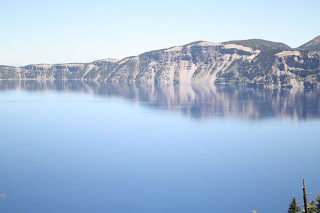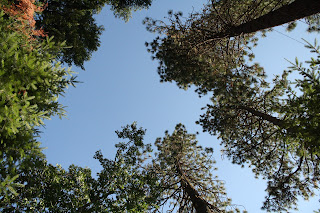Fleck: Concerto for Banjo and Orchestra (Bela Fleck, banjo)
Copland: Suite from Billy the Kid
Gershwin: An American in Paris
The Cleveland Orchestra
Giancarlo Guerrero, conductor.
It's fitting that after a tour of an American factory (along with a visit to the Newport Aquarium in Kentucky earlier today, but more about that later) we returned to Cleveland in time for me to attend tonight's made-in-America program with The Cleveland Orchestra.
In truth, this was perhaps the first "normal" Cleveland Orchestra concert I've put in the "eagerly awaited" column -- if you're a regular reader of this blog, you probably know that Aaron Copland is among a very few composers I might describe as my "favorite". Gershwin isn't far behind, and I generally have no complaints with John Adams. Indeed, when I saw this program on the season calendar, this was going to be my "Absolutely no way I'm going to miss it, clients be damned" concert*.
It would seem I wasn't completely alone -- the concert was down to standing room only availability, and the seat I was able to get was the worst seat I've had in a while. That didn't significantly detract from the experience though -- and it was worth rushing north from Cincinnati to hear.
Adams Short Ride in a Fast Machine was short at perhaps five minutes, and put me back on the road with the persistent click from percussion reminding me of the passing dashed stripes zooming by on the freeway, although enjoyable at times the percussion overwhelmed the remainder of the orchestra.
I was not particularly looking forward to the Concerto for Banjo beyond, perhaps, the novelty of a banjo on the Severance Hall stage, but in keeping an open mind the listener was rewarded with an intriguing piece in three movements, the first movement -- a little lighter and laying the groundwork for the remaining movements. Pragmatically, it seemed like the banjo spent time wandering alone against the orchestra as a society but I noticed (and this is echoed in the program notes) that the banjo was gaining its identity as a banjo as the piece developed: The unformed child, the rebellious teen, and finally accepting its role in lit.
Following intermission, the piece I had been waiting for was delightfully played. Copland is one of few "classical" composers that can be found on my iPod, and the complete score for the ballet Billy The Kid is in that collection. Although I prefer Appalachian Spring (And I have an awesome recording of Copland rehearsing an orchestra for a recording of Appalachian Spring that I love listening to -- and listening to Copland describe the effects he wants, but I digress), but the Billy the Kid Suite was everything had hoped for, but with the added warmth and clarity of hearing The Cleveland Orchestra perform the piece in Severance Hall -- the first time since February, 1943* was completely engaging.
I was running on the last of my steam for Gershwin's An American in Paris, but like the Copland, although it's a piece I'm more familiar with, I loved to hear the familiar sounds with the passion and precision of the Cleveland Orchestra.
I can only hope that future seasons will bring more [tonal] American composers to the program, and that it won't be another 49 years before we hear Billy The Kid in the hall.
Unfortunately, it appears the Christmas Concerts for the days I'm actually in Cleveland have sold out so this may be my last visit to the hall for 2012 -- and if it is, it was a great concert to end the calendar year with.
Lincoln

*- I do really wonder about some of the artistic decisions when there are some pieces that appear on the program seemingly every year, yet Copland's suite from Billy the Kid -- not obscure by any means -- was last played in the hall over a year before my father was born, and An American In Paris looks to be played nearly as often.

















 On Thursday evening a group of about 30 Column and Stripe members assembled in the plaza separating Progressive Field from The Q downtown.
On Thursday evening a group of about 30 Column and Stripe members assembled in the plaza separating Progressive Field from The Q downtown. 


 (For Part 1 - where I get to California (the first time) Monday and pick up Rachel Tuesday
(For Part 1 - where I get to California (the first time) Monday and pick up Rachel Tuesday 








 (Part I, the Boring Part can be found
(Part I, the Boring Part can be found 











